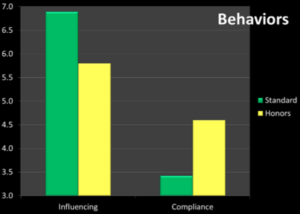
Understanding Motivators: Aesthetic
High Aesthetics want to be in an environment that fits well with them. Learn more in this post.

High Aesthetics want to be in an environment that fits well with them. Learn more in this post.

Motivators describe why people do things: the internal desires that drive behavior. Motivators correlate with career choice, college major selection, and extracurricular activities. Learn more in this post.

New Motivator Research: Aesthetics Matter for High School Students March 14th 2015, Written by Marie Campbell Indigo recently administered the Indigo Assessment to students at
aesthetic AI asking awards college fits Communication compliance continuous learning creativity DISC dominance Education empathy Empowering Educators FBLA future of education goals Indigo Indigo Assessment Indigo Data Indigo Education Company individualistic influencing leadership LearnLaunch Listening mentoring Motivators Partners Peak to Peak High School Personalized Learning persuasion planning Podcasts Professional Development self-awareness social soft skills Speaking Engagement steadiness team Teamwork theoretical TTI utilitarian